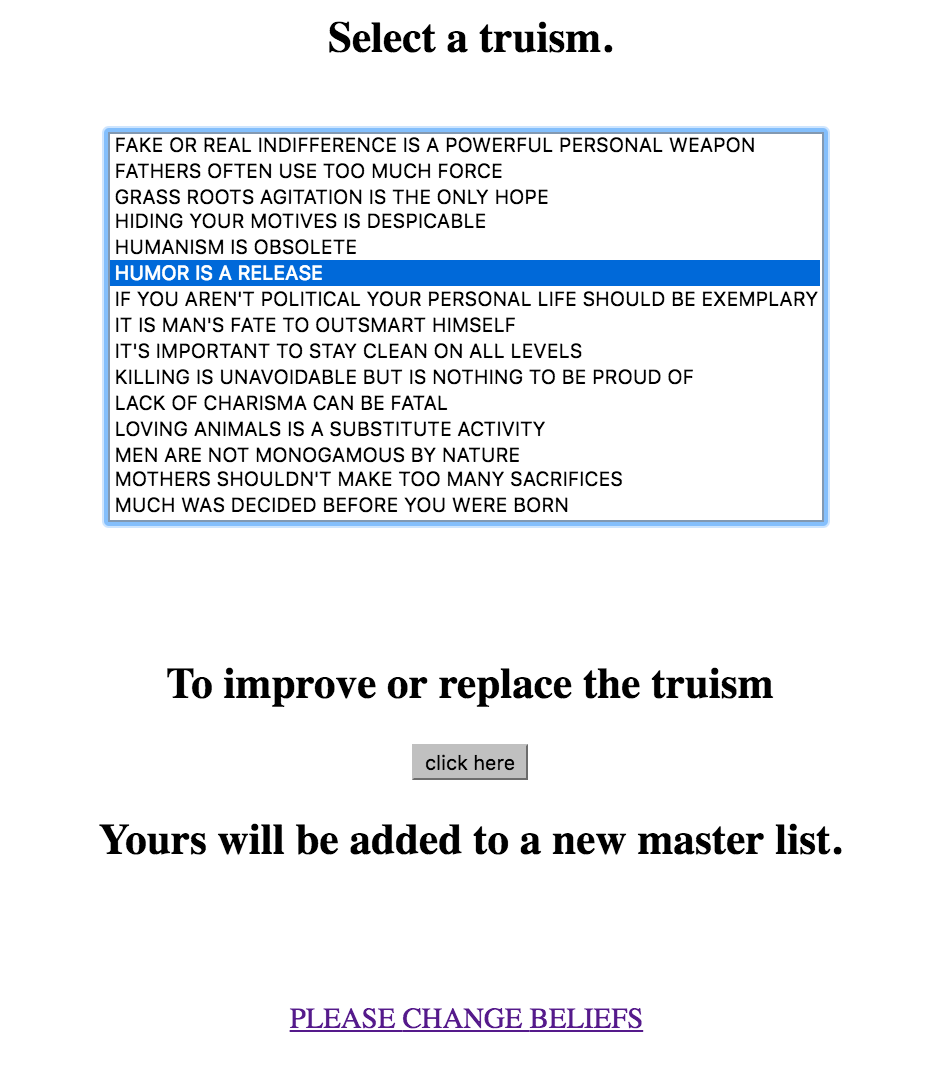Jenny Holzer’s please change believes, is a work base on the world wide web, where she invites the audiences to contribute and change the given truism. Her body of work focuses on the delivery of words and ideas in public spaces. These short truisms are very direct and are very obvious for us. However, by inviting the viewers to change the truism, it forces the viewers to pause and think about the statements and their experiences.
This decentralization of authorship, location, and narrative foreshadows the nonhierarchical and nonsequential forms of interactive and networked media that expand and realign the boundaries of time, space, viewer, and artist to create new kinds of collective experience and social engagement. – Randall Packer
Open source has truly allowed artworks to transcend time and space. Through the use of the world wide web, images or information of art works can be accessed anytime and anywhere. People no longer need to travel to museum or gallery to view the art works. Similarly, in Holzer’s work, the internet allows viewers interact and contribute to the artwork regardless of the location or the time difference.
I especially love the use of truisms. Truism are so relatable to everyone, regardless of their culture or education level as it is a common experience. However, by allowing the viewers to edit and change the base statement, it widens the perspective and scope of the artwork. Some experiences are unique to each culture or through personal experiences . The sharing of this tidbits of information widens the scope and depth of the artwork.


